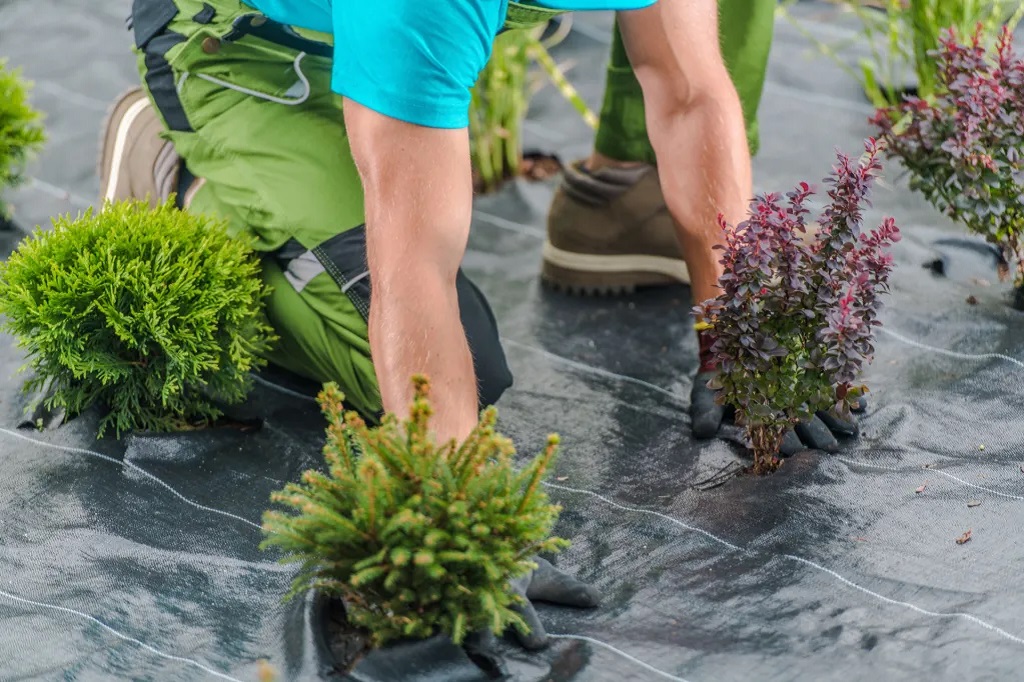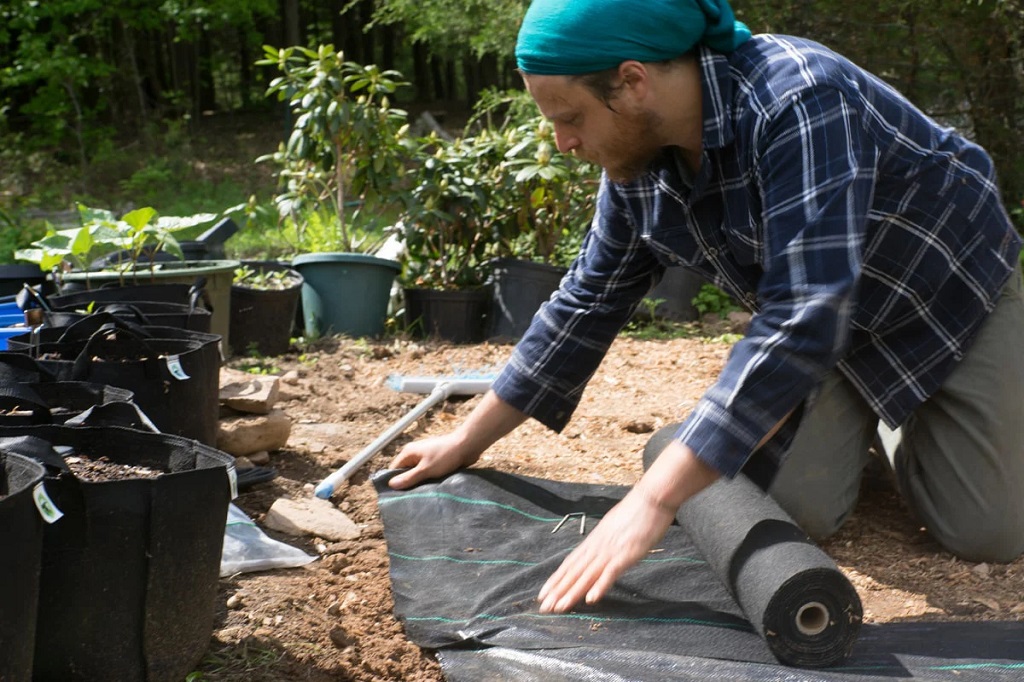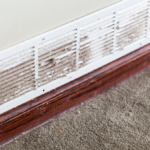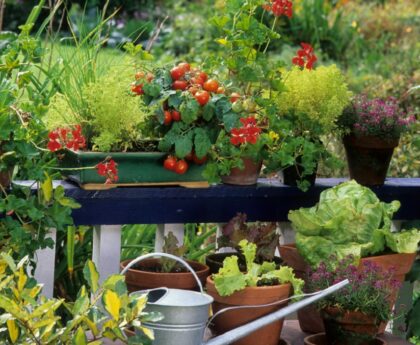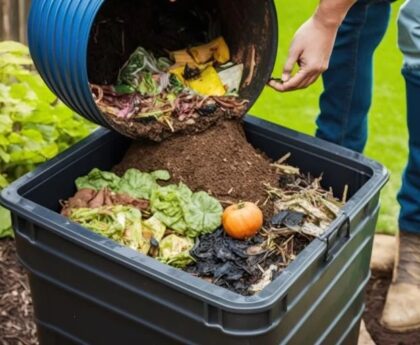For every gardener, the battle against weeds is a constant struggle. They steal precious nutrients and water from your desired plants, making them look stunted and unhealthy. Landscape fabric offers a tempting solution, promising a weed-free haven for your flowers and vegetables. But before you rush out and smother your garden in fabric, there’s more to consider than just weed suppression.
This guide will delve into the world of landscape fabric, exploring its benefits, drawbacks, and best practices for using it effectively in your garden or flower bed. We’ll equip you with the knowledge to decide if landscape fabric aligns with your gardening goals and, if so, how to use it for optimal results.
Unveiling the Benefits of Landscape Fabric
Landscape fabric, also known as a weed barrier, is a woven or non-woven synthetic material designed to suppress weed growth. Here are some key advantages it offers:
- Reduced Weeding: This is undoubtedly the biggest draw. By blocking sunlight, landscape fabric hinders weed seed germination and prevents existing weeds from thriving. You’ll spend less time battling weeds and more time enjoying your beautiful blooms.
- Moisture Retention: Some landscape fabrics are designed to allow water to pass through while inhibiting evaporation. This can be particularly beneficial in hot, dry climates where moisture conservation is crucial for plant health.
- Temperature Moderation: Darker-colored landscape fabrics can help regulate soil temperature. In cool climates, they can trap some warmth in the ground, while in hot climates, they may help keep the soil cooler.
- Erosion Control: Landscape fabric can help prevent soil erosion on slopes or in windy areas. By creating a barrier between the soil and the elements, it reduces the risk of soil being washed away.
Beyond Weed Suppression: Additional Considerations
While landscape fabric offers clear advantages, it’s not a one-size-fits-all solution. Here are some factors to consider before incorporating it into your garden:
- Impact on Soil Health: Landscape fabric can impede the natural flow of air, water, and beneficial organisms within the soil. This can disrupt the delicate ecosystem that fosters healthy plant growth. Over time, it may lead to compacted soil with reduced organic matter content.
- Limited Plant Choice: Since planting directly through landscape fabric can be challenging, it’s often used with established beds or for perennials that require minimal root disturbance. This might limit your options for incorporating new plants or creating diverse, dynamic flower beds.
- Microplastics and Biodegradability: Some landscape fabrics are made from non-biodegradable materials, raising concerns about microplastic pollution in the soil. Look for options made from biodegradable materials like woven hemp or jute for a more eco-friendly approach.
Making Landscape Fabric Work for You: Best Practices
If, after considering the pros and cons, you decide to use landscape fabric, these tips will help you maximize its effectiveness while minimizing potential drawbacks:
- Preparation is Key: The groundwork you lay before installing landscape fabric is crucial for success. Thoroughly remove all existing weeds from the planting area. This ensures you’re not trapping unwanted guests beneath the fabric. Additionally, amend your soil with compost or other organic matter to improve its health and drainage before laying down the fabric.
- Choose the Right Fabric: Landscape fabric comes in various weights and permeabilities. For flower beds, a lightweight, breathable fabric that allows water to pass through easily is preferable. Opt for darker-colored fabrics in hot climates and lighter ones in cooler climates to manage soil temperature.
- Measure and Cut Accurately: Measure your planting area meticulously and purchase enough landscape fabric to cover it entirely with a few inches of excess for overlap. Carefully cut the fabric to size, ensuring clean edges.
- Secure the Fabric: Use landscape staples or weighted pins to secure the fabric firmly to the ground. This will prevent wind from blowing it away and ensure it stays taut, minimizing opportunities for weeds to sneak through.
- Planting Through the Fabric: There are two main methods for planting through landscape fabric:
- X-shaped Incision: Cut an X-shaped incision in the fabric where you want to plant. Fold back the flaps and dig a hole for your plant. Once planted, fold the flaps back down and secure them with staples to prevent edges from fraying.
- Pre-cut Holes: Some landscape fabrics come with pre-cut holes spaced for planting. Simply remove the plug where you want to plant and place your plant directly through the opening.
- Mulch Matters: Apply a layer of mulch (around 2-3 inches thick) over the landscape fabric. Mulch further suppresses weeds, retains moisture, regulates soil temperature, and adds a decorative touch to your garden bed.
Long-Term Considerations :
- Lifespan and Replacement: Landscape fabric, particularly non-biodegradable options, can deteriorate over time due to sun exposure and wear. Be prepared to replace it every 5-10 years, depending on the quality and climate. When replacing, remove the old fabric, loosen the soil, and re-establish healthy soil conditions before laying down the new fabric.
- Maintaining Soil Health: While landscape fabric offers short-term weed control, it’s important to consider its long-term impact on soil health. Here are some strategies to mitigate potential drawbacks:
- Rotating Beds: Don’t rely solely on landscape fabric in a single bed indefinitely. Practice bed rotation by planting in different areas of your garden over time. This allows the soil to breathe and recover between uses with fabric.
- Soil Aeration: Periodically aerate the soil beneath the fabric. Use a core aerator or a garden fork to create small holes, allowing air and water to penetrate deeper into the soil profile.
- Compost Tea: Apply compost tea, a liquid extract rich in beneficial microbes, to the soil surface at regular intervals. This can help replenish the microbial population in the soil that may be disrupted by the fabric.
Alternatives to Landscape Fabric:
While landscape fabric can be a useful tool, it’s not the only option for weed control. Here are some eco-friendly and sustainable alternatives to consider:
- Mulching: A thick layer of organic mulch (around 2-3 inches) is a great way to suppress weeds naturally. Mulch breaks down over time, adding valuable organic matter to your soil and improving its health. Opt for different types of mulch like shredded bark, wood chips, or straw for added aesthetics.
- Sheet Mulching: This technique involves laying down layers of cardboard or newspaper directly on the planting area, followed by a thick layer of mulch. The cardboard smothers existing weeds, while the mulch suppresses new weed growth and improves soil health as it decomposes.
- Cover Crops: Planting cover crops like buckwheat or ryegrass in between planting seasons can effectively suppress weeds. These fast-growing plants compete with weeds for resources and add organic matter to the soil when tilled under before planting your desired flowers or vegetables.
- Hand Weeding: There’s no substitute for good old-fashioned hand weeding. While it requires more effort, it allows for a more targeted approach to weed control and avoids disrupting the soil ecosystem.
Related: What to Plant on Fences for Privacy
Conclusion:
Landscape fabric offers a convenient solution for weed control, but it’s not a magic bullet. By understanding its benefits and drawbacks, you can make an informed decision about whether it aligns with your gardening philosophy and goals. Remember, a healthy and vibrant garden is often built on a foundation of healthy soil. If you choose to use landscape fabric, prioritize practices that maintain soil health in the long run. For those seeking a more natural approach, explore the various eco-friendly alternatives available. With the right knowledge and techniques, you can create a beautiful, weed-free haven for your flowers and vegetables to thrive.

